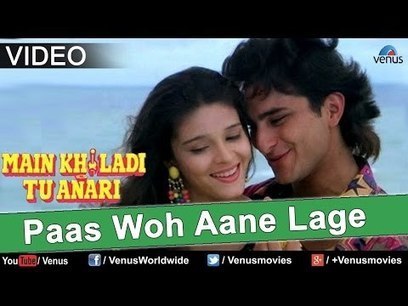Torrent Love Ki Paathshala Hd Movie Download
What: Scientists from 13 countries involved with modeling and observing the coupled high-latitude weather and climate system discussed our current understanding and challenges in polar prediction, extreme events, and coupled processes on scales ranging from cloud and turbulent processes, from micrometers and a few hundred meters to processes on synoptic-scale weather phenomena and pan-Arctic energy budgets of hundreds to thousands of kilometers. Workshop participants also evaluated research needs to improve numerical models with usages spanning from uncoupled to fully coupled models used for weather and climate prediction (). Linkin park album download zip. When: 23–27 March 2015 Where: Rosendal, Norway The workshop on Dynamics of Atmosphere–Ice–Ocean Interactions in the High Latitudes attracted 90 scientists who met to 1) identify challenges in polar prediction, 2) explore our understanding of the coupled climate system in the high latitudes, and 3) identify research priorities to improve our knowledge and predictive capabilities. We summarize the workshop discussions for four main themes. Jennifer Francis hypothesized that a weakening of the near-surface meridional temperature gradient associated with Arctic amplification may cause a slowdown of the westerly winds and larger amplitudes of waves in the midlatitude jet stream, leading to more persistent weather regimes.


HD ONLINE MOVIES is the best movie site, where you can watch English, Hindi,Telugu,Tamil and other movies online completely free.
James Screen discussed how certain aspects of this hypothesis were hard to verify with observations because of short time series, metric dependence, and large natural variability and cautioned that model projections do not support an increase in waviness in the future. Ocean heat transport into the Arctic was shown by Ingrid Onarheim to be a critical driver of Barents sea ice variability. Martin King proposed that the stratosphere is important to an observed lagged relationship between autumn Barents–Kara sea ice and wintertime tropospheric circulation. Kelly McCusker spoke about the dramatic cooling over continental Eurasia in the last decade and attributed this cooling to internal variability rather than a forced response to sea ice loss. Stephen Outten showed that many models in the fifth phase of the Coupled Model Intercomparison Project (CMIP5) fail to correctly capture the observed covariability between sea ice and Eurasian temperatures. Model experiments presented by Yvan Orsolini and Ruth Petrie showed a sensitivity of the winter North Atlantic Oscillation (NAO) to Eurasian snow cover and summer NAO to observed sea ice loss, respectively. Turning to the Southern Hemisphere, Sharon Stammerjohn discussed the seasonally and regionally varying trends in Antarctic sea ice and emphasized their close connection to wind and wind-driven ocean heat transport changes.
Scott Hoskins linked the recent warming of West Antarctica to a shift in the Amundsen Sea low, which the CMIP5 models suggest is a manifestation of internal variability. Fumiaki Ogawa proposed that ozone-driven changes in the Southern Annular Mode are sensitive to model representation of oceanic fronts, with larger sea surface temperature gradients enhancing the vertical connectivity between the surface and the stratospheric polar vortex. There was recognition that including coupling between atmosphere, sea ice, and ocean can improve forecast skill across a range of time scales. Coupling must therefore be considered across a range of scales appropriate to the time scale of the forecast, from planetary-scale dynamics to subgrid-scale processes in models. It was pointed out that better knowledge is needed as to the dominant causal direction of atmosphere–ocean–ice coupling and polar–midlatitude–tropical interactions and of their physical mechanisms, including the role of the stratosphere. In addition, the effects of model biases on projections for many of the phenomena discussed are still poorly understood.